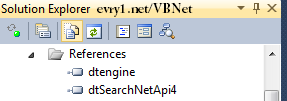

There's no questioning the benefit of quickly finding that e-mail or spreadsheet squirreled away months ago. Because of this complexity and the reality that most enterprise knowledge resides on workers' PCs, consumer desktop search technology has infiltrated organizations - and has caught IT executives off guard. If they do, you are set.When enterprises roll out search applications, it's usually a big IT effort to keep indexes refreshed and the overall systems running.

In the properties of the Scheduled Task, under Actions, add a second action to run the CopyIndexFiles.bat file.Put the single line in the file: copy "C:\Inetpub\.Next, create a file in the same folder named CopyIndexFiles.bat and open it for editing.For example: IndexPath="C:\Inetpub\wwwroot\PortalRoot\Modules\dtSearch\TempIndex\" It will look something like this: IndexPath="C:\Inetpub\wwwroot\PortalRoot\Modules\dtSearch\Index\" In the nfig, located usually at c:\program files\Passageways\DTSearch\, locate the line for the portal and look at the IndexPath.You can use this as a gauge to tell how long you should take between runs.

Run it once and take note of how long it takes to run.

This means while the index is running, documents cannot be searched. How it works is it indexes your Portal Documents, which is any document that can be reached by going through the Portal Documents section of the portal.ĭTSearch normally sets the index location of the files and then the DTSearch module points at that location to do the searching of the index. DTSearch is the Passageways Portal Document Indexer.


 0 kommentar(er)
0 kommentar(er)
